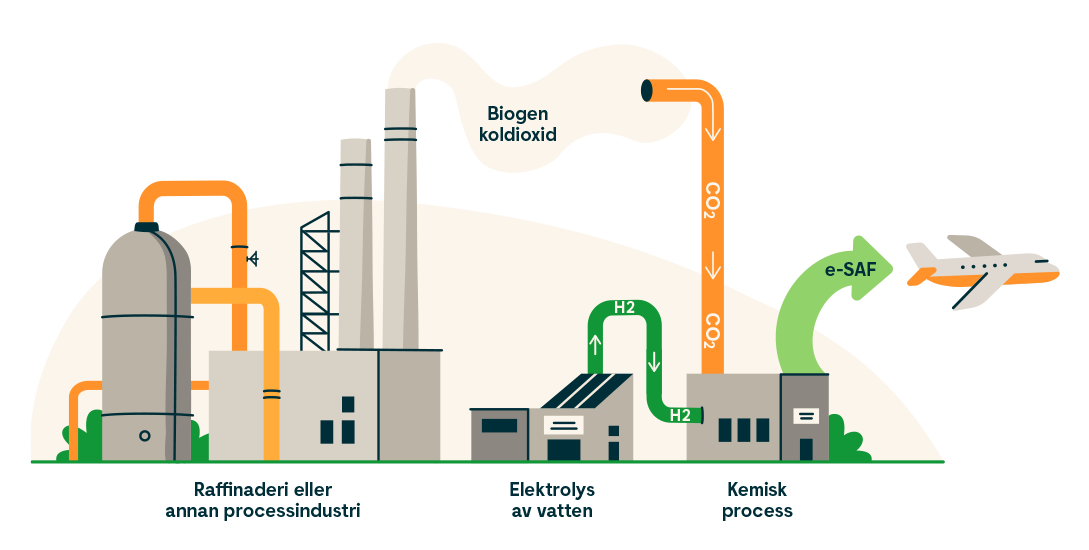Preem’s transition toward an increasingly renewable production enhances our access to carbon dioxide of renewable origin. Combined with hydrogen, this renewable carbon dioxide, be utilized to produce electrofuels.
We are investigating the potential for producing electrofuels as a complement to bio-based renewable fuels. Together, these fuels support the phase-out of fossil fuels and contribute to our goal of achieving a climate-neutral value chain by 2035.
We are currently awaiting the results of this initial feasibility study to inform further decisions.
Key to the transition
The EU recognizes electrofuels as part of the mix of renewable liquid fuels that will replace fossil fuels, particularly in aviation. Starting in 2030, flights departing from European airports will be required to incorporate a specified share of electrofuels, with this proportion gradually increasing over time.
Potential end products, such as synthetic methane, methanol, naphtha, or ammonia, can also serve as renewable feedstocks in industries such as the chemical sector, thereby supporting the broader industrial transition
Renewable fuels from electricity, water, and carbon dioxide
Electrofuels, also known as synthetic fuels, are produced by combining fossil-free hydrogen—generated through water electrolysis—with carbon dioxide. The final product can be renewable fuels for road transport, aviation, and shipping or chemicals for industrial applications.

The picture: Schematic illustration of the production of so-called e-SAF, renewable electrofuel for aviation. Different processes can yield different results, such as renewable fuels and/or feedstocks for the chemical industry.